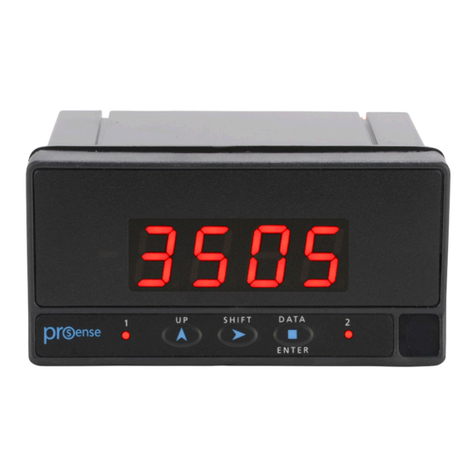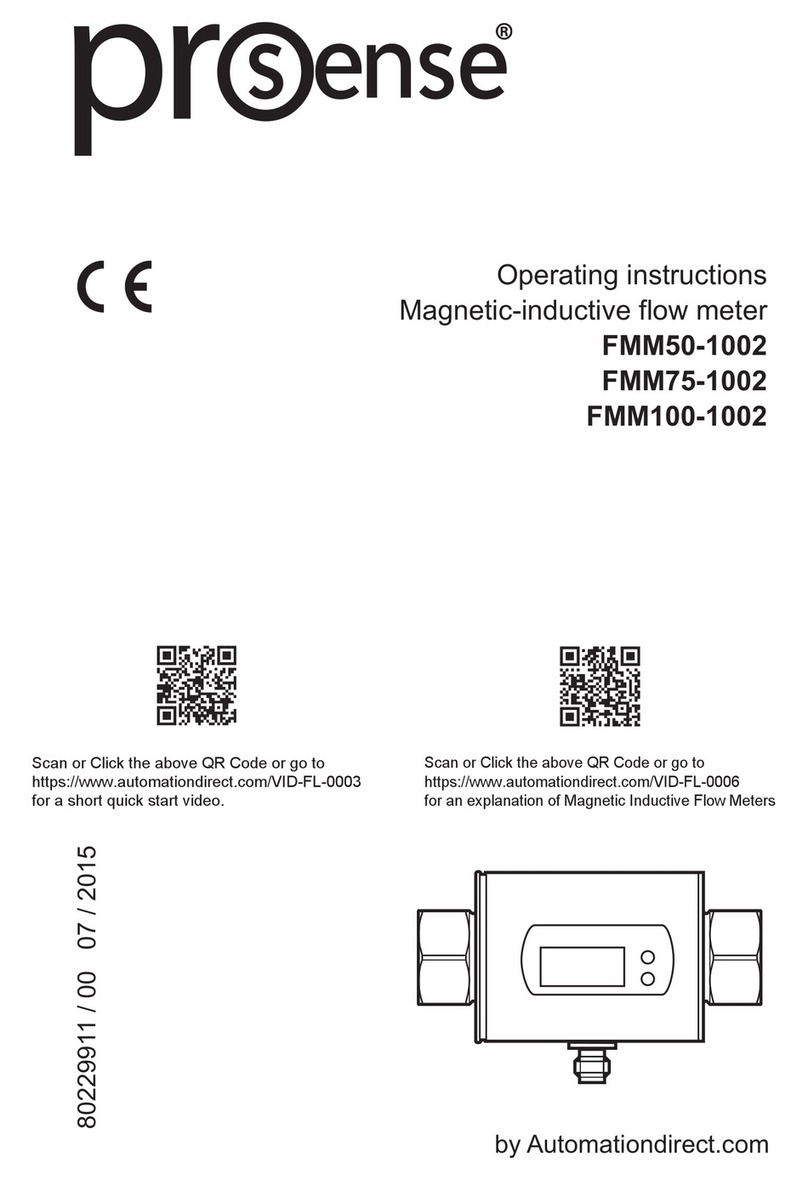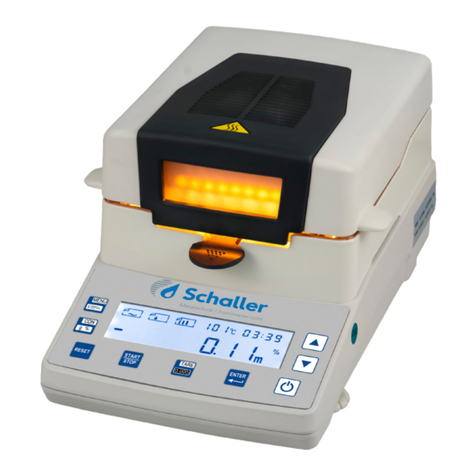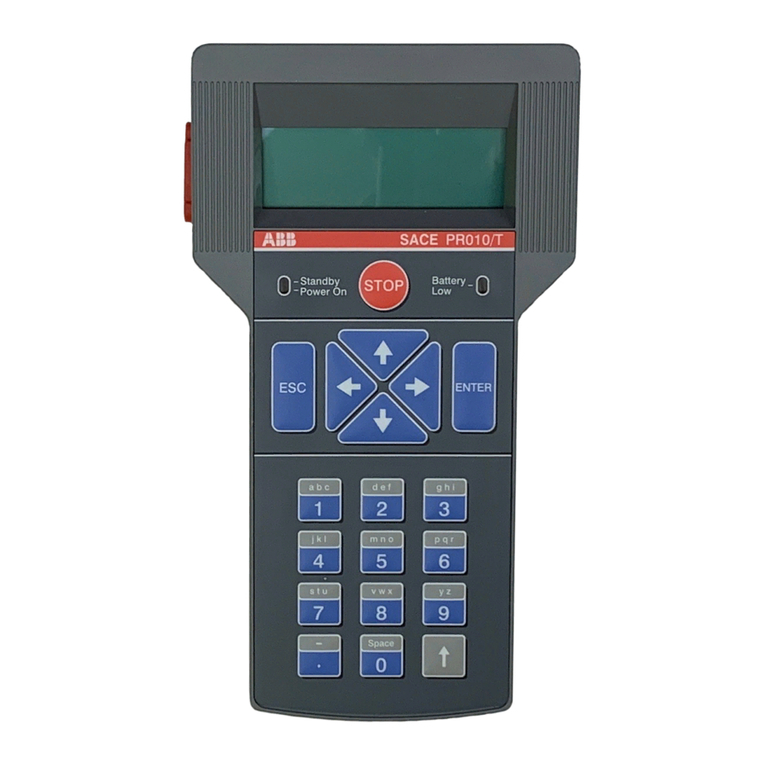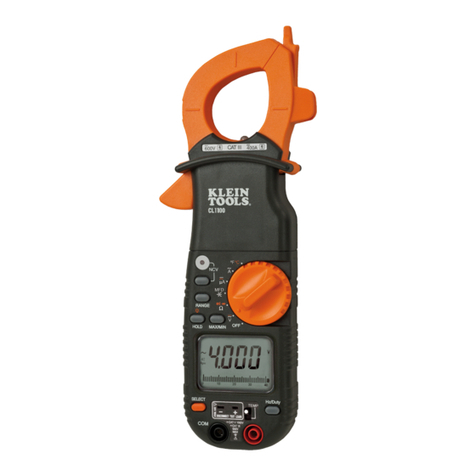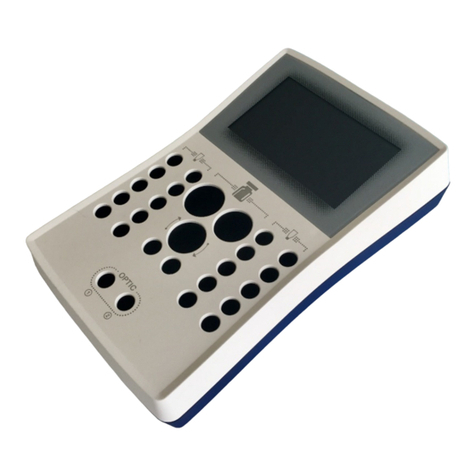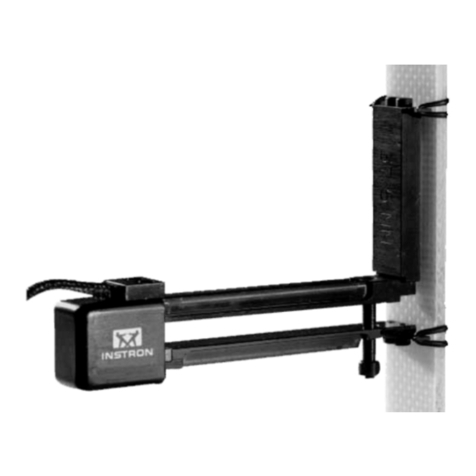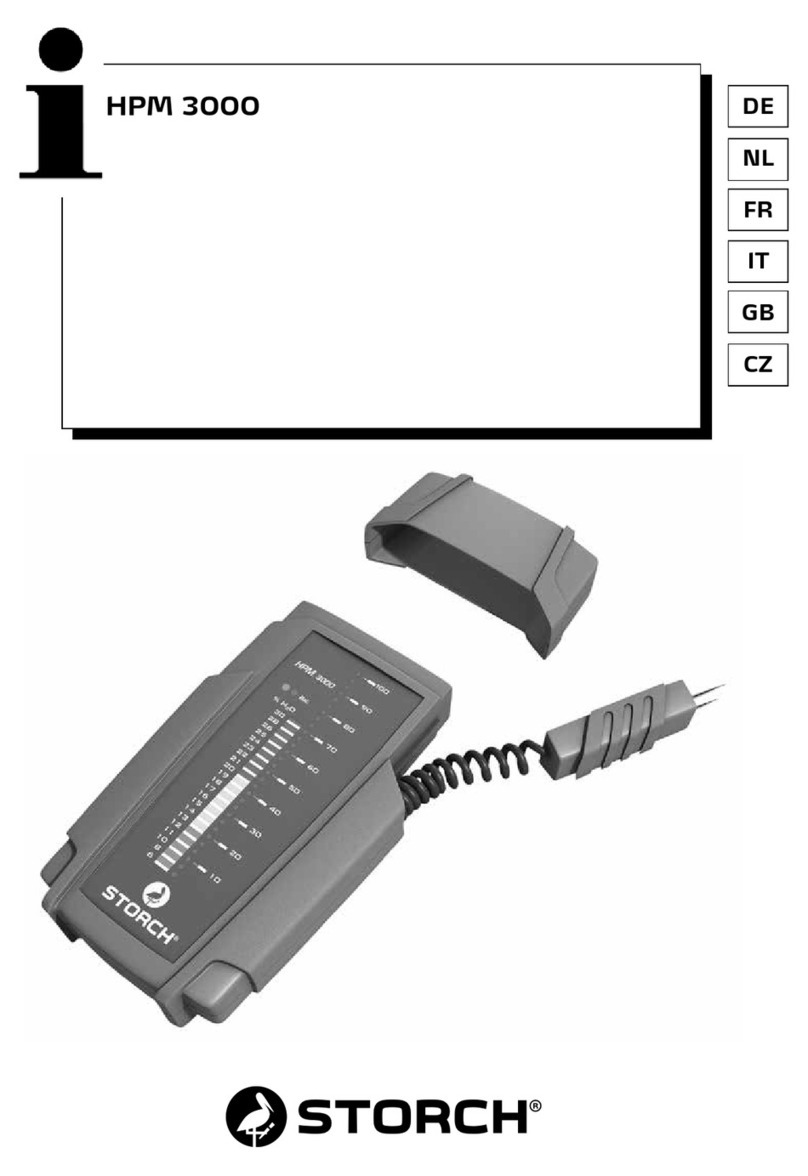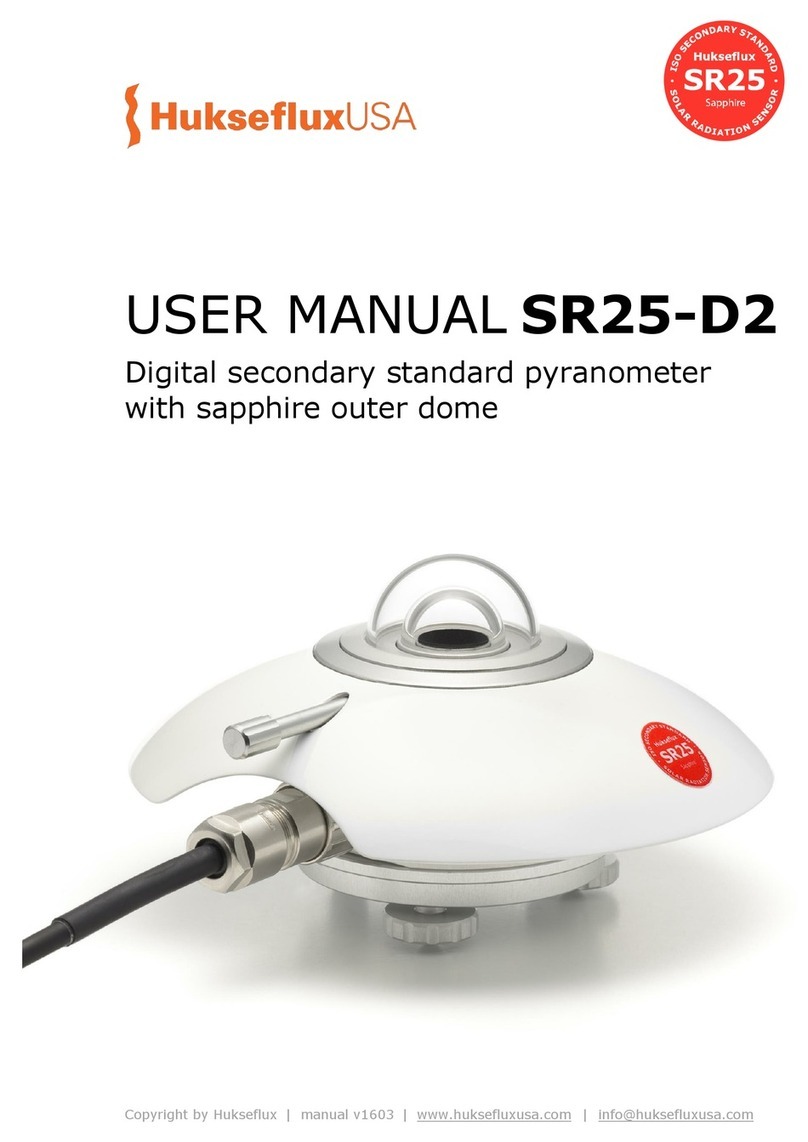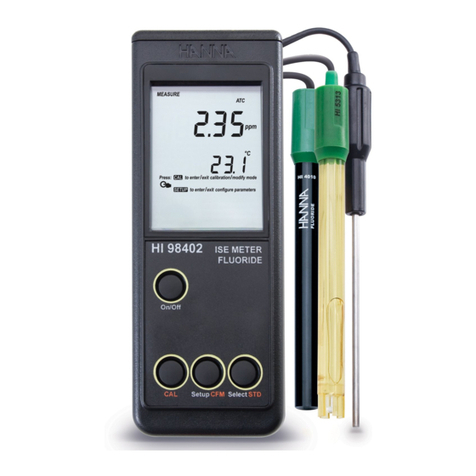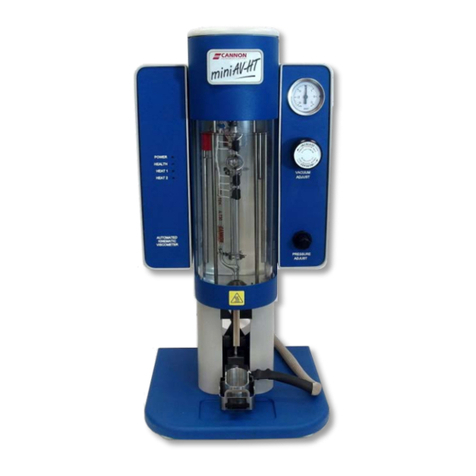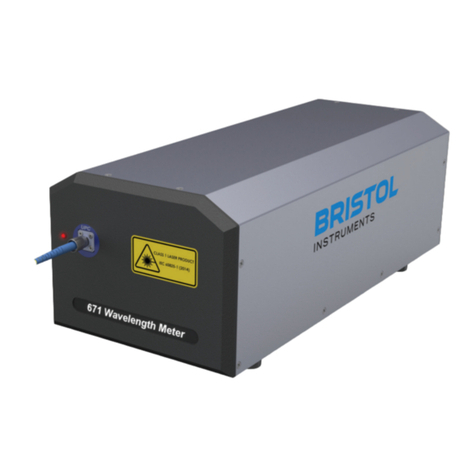Prosense FMM50-1001 User manual

Operating instructions
Magnetic-inductive flow meter
FMM50-1001
FMM75-1001
FMM100-1001
80260076 / 00 07 / 2021
by Automationdirect.com
Scan or Click the above QR Code or go to
https://www.automationdirect.com/VID-FL-0003
for a short quick start video.
Scan or Click the above QR Code or go to
https://www.automationdirect.com/VID-FL-0006
for an explanation of Magnetic Inductive Flow Meters

2
Contents
1 Preliminary note...................................................................................................4
2 Safety instructions ...............................................................................................4
2.1 For the scope of validity cULus .....................................................................5
3 Functions and features ........................................................................................5
4 Function...............................................................................................................5
4.1 Processing of the measured signals..............................................................6
4.2 Direction of flow .............................................................................................6
4.2.1 Determination of the direction of flow (Fdir)..........................................6
4.2.2 Detection of the direction of flow (dir.F) ................................................7
4.3 Volumetric totalizer monitoring (ImP).............................................................7
4.3.1 Display and counting method of the volumetric totalizer ......................8
4.3.2 Volumetric totalizer monitoring via pulse output ...................................8
4.3.3 Volumetric totalizer monitoring via preset counter................................9
4.4 Switching function........................................................................................10
4.5 Analog function ............................................................................................ 11
4.6 Measured value damping (dAP) ..................................................................13
4.7 Start-up delay (dST) ....................................................................................13
4.8 Low flow cut-off (LFC)..................................................................................15
5 Mounting............................................................................................................16
5.1 Recommended installation position.............................................................16
5.2 Not recommended installation position........................................................17
5.3 Grounding....................................................................................................18
6 Electrical connection..........................................................................................18
7 Operating and display elements ........................................................................20
8 Menu..................................................................................................................22
9 Set-up ................................................................................................................24
10 Parameter setting ............................................................................................24
10.1 Parameter setting in general .....................................................................25
10.1.1 Change to the menu "Extended functions".......................................25
10.1.2 Locking / Unlocking ..........................................................................26
10.1.3 Timeout.............................................................................................26
10.2 Settings for flow rate monitoring ................................................................26

3
10.2.1 Limit monitoring flow rate (OUT1).....................................................26
10.2.2 Limit monitoring flow rate (OUT2).....................................................26
10.2.3 Analog output flow rate (OUT2) ........................................................26
10.2.4 Detection of the direction of flow (OUT1 or OUT2)...........................26
10.3 Settings for volumetric totalizer monitoring................................................27
10.3.1 Volumetric totalizer monitoring by pulse output (OUT1) ...................27
10.3.2 Volumetric totalizer monitoring by preset counter (OUT1)................27
10.3.3 Pulse value .......................................................................................27
10.3.4 Manual counter reset........................................................................27
10.3.5 Time-controlled counter reset ...........................................................27
10.3.6 Deactivation of the counter reset......................................................27
10.3.7 Counter reset using an external signal .............................................28
10.4 Settings for temperature monitoring ..........................................................28
10.4.1 Limit monitoring temperature (OUT2)...............................................28
10.4.2 Analog output temperature (OUT2) ..................................................28
10.5 User settings (optional)..............................................................................28
10.5.1 Standard unit of measurement for flow rate .....................................28
10.5.2 Standard display...............................................................................29
10.5.3 Output logic ......................................................................................29
10.5.4 Start-up delay ...................................................................................29
10.5.5 Measured value damping .................................................................29
10.5.6 Error behaviour of the outputs ..........................................................29
10.5.7 Low flow cut-off.................................................................................30
10.5.8 Counting method of the totalizer.......................................................30
10.5.9 Direction of flow ................................................................................30
10.6 Service functions .......................................................................................30
10.6.1 Read min/max values .......................................................................30
10.6.2 Restoring the factory settings ...........................................................30
11 Operation .........................................................................................................31
11.1 Reading the process value ........................................................................31
11.2 Changing the process value display in the RUN mode..............................31
11.3 Reading the set parameters.......................................................................31
12 Troubleshooting ...............................................................................................32
13 Technical data..................................................................................................33
14 Factory setting ................................................................................................33

4
1 Preliminary note
►Instructions
> Reaction, result
[…] Designation of keys, buttons or indications
→Cross-reference
Important note
Non-compliance may result in malfunction or interference.
Information
Supplementary note.
CAUTION
Warning of personal injury.
Slight reversible injuries may result.
2 Safety instructions
• Please read this document prior to set-up of the unit. Ensure that the product is
suitable for your application without any restrictions.
• If the operating instructions or the technical data are not adhered to, personal
injury and/or damage to property can occur.
•Improper or non-intended use may lead to malfunctions of the unit or to un-
wanted effects in your application. That is why installation, electrical connec-
tion, set-up, operation and maintenance of the unit must only be carried out by
qualified personnel authorized by the machine operator.
• In order to guarantee the correct condition of the device for the operating time it
is necessary to use the device only for media to which the wetted materials are
sufficiently resistant (→Technical data).
• The responsibility whether the measurement devices are suitable for the
respective application lies with the operator. The manufacturer assumes no
liability for consequences of misuse by the operator. Improper installation and
use of the devices result in a loss of the warranty claims.
• For medium temperatures above 122 °F some parts of the housing can heat up
to over 149 °F. Moreover, during installation or in case of a fault (e.g. housing
damage) media under high pressure or hot media can leak from the system. To
avoid personal injury, take the following measures:

5
►Install the units according to the applicable rules and regulations.
►Ensure that the system is free of pressure during installation.
►Protect the housing against contact with flammable substances and uninten-
tional contact. To do so, equip the units with suitable protection (e.g. protective
cover).
►Do not press the pushbuttons manually. instead use another object (e.g.
ballpoint pen).
2.1 For the scope of validity cULus
The device shall be supplied from an isolating transformer having a secondary
Listed fuse rated either
- a) max 5 amps for voltages 0~20 Vrms (0~28.3 Vp) or
- b) 100/Vp for voltages of 20~30 Vrms (28.3~42.4 Vp).
The device shall be connected only by using any Listed (CYJV/7) or R/C (CY-JV2/8)
cord in respect of Condition of Acceptability, having suitable ratings.
3 Functions and features
The unit monitors liquid media. It detects the 3 process categories volumetric flow,
consumed quantity, medium temperature.
Pressure Equipment Directive (PED)
The units comply with the Pressure Equipment Directive and are designed and
manufactured for group 2 fluids in accordance with the sound engineering practice.
Application area
Conductive liquids with the following properties:
• Conductivity: ≥20 μS/cm
• Viscosity: < 70 cSt at 104 °F
•Max. pressure rating: 232 PSIG (16 bar)
4 Function
• The unit detects the flow based on the magnetic-inductive volumetric flow
measuring principle.
• The unit also detects the medium temperature.
• The unit displays the current process value.

6
4.1 Processing of the measured signals
The unit generates 2 output signals according to the parameter settings:
OUT1: 4 selection options Parameter setting
- Switching signal for flow rate quantity limit →10.2.1
- Pulse signal for volumetric totalizer →10.3.1
- Switching signal for preset counter →10.3.2
- Switching signal for direction of flow →10.2.4
OUT2: 6 selection options Parameter setting
- Switching signal for flow rate quantity limit →10.2.2
- Switching signal for temperature limit →10.4.1
- Analog signal for flow rate quantity →10.2.3
- Analog signal for temperature →10.4.2
- Switching signal for direction of flow →10.2.4
- Input for external counter reset signal (InD) →10.3.7
4.2 Direction of flow
In addition to the flow rate and the volumetric totalizer quantity, the unit also
detects the direction of flow.
4.2.1 Determination of the direction of flow (Fdir)
An arrow with the text "flow direction" on the unit indicates the positive flow direc-
tion. The flow direction can be inversed (→10.5.9).
►Use the supplied label to mark the changed flow direction (new positive
direction of flow).
Flow... Process value display
corresponds to the marked flow direction + (positive)
against the marked flow direction - (negative)

7
4.2.2 Detection of the direction of flow (dir.F)
When dir.F is activated (→10.2.4), the direction of flow is indicated by a switching
signal.
The output is switched on until the set minimum volumetric flow quantity in nega-
tive direction of flow (- LFC) is not reached (1).
Afterwards the following applies:
- The output switches ON when + LFC is exceeded (2).
- The output switches OFF when - LFC is not reached (3).
+ LFC
+ Q
- Q
- LFC
1
0
1 2 3
+ Q : Flow in positive direction of flow
- Q : Flow in negative direction of flow
+ LFC: Minimum volumetric flow quantity in positive direction of flow
- LFC : Minimum volumetric flow quantity in negative direction of flow
Positive direction of flow = marked direction of flow,
with the factory setting marked by the arrow on the unit or after change via Fdir
marked by the attached label (→4.2.1).
4.3 Volumetric totalizer monitoring (ImP)
The unit has an internal totalizer. It continuously totals the consumed quantity
after the last reset. Pulse signals or a switching signal can be used to monitor the
volumetric totalizer.
→10.3.1 Volumetric totalizer monitoring by pulse output (OUT1)
→10.3.2 Volumetric totalizer monitoring by preset counter (OUT1)

8
4.3.1 Display and counting method of the volumetric totalizer
Meter reading:
• The current meter count can be indicated (→11.2).
• In addition the value before the last reset is saved. This value can also be
displayed (→11.2).
The meter saves the totalled consumed quantity every 10 minutes. After
a power failure this value is available as the current meter reading. If a
time-controlled reset is set, the elapsed time of the set reset interval is also
saved. So the possible data loss can be maximum 10 minutes.
Counter reset:
• There are different ways to reset the quantity meter.
→10.3.4 Manual counter reset
→10.3.5 Time-controlled counter reset
→10.3.7 Counter reset using an external signal
• If the volumetric totalizer is not reset using one of the above-mentioned
processes, an automatic reset will be made when the maximum volumetric
totalizer quantity that can be displayed is exceeded (overflow).
Taking into consideration the direction of flow:
• The quantity meter takes account of the flow direction for totalisation. The fol-
lowing counting methods can be defined via the parameter [FPro] (→10.5.8):
[FPro] Counting method
0+ Negative flow values (against the marked direction of flow) are not taken
into consideration for totalling.
– + Negative flow values are subtracted from the volumetric totalizer.
4.3.2 Volumetric totalizer monitoring via pulse output
Output 1 indicates a pulse signal when the set flow volume has been reached
(pulse value →10.3.3).
Depending on the setting of the counting method [FPro] totalling of the flow
volume takes into account the flow in negative direction of flow (– +) or does not
take it into account (0+) →4.3.1.

9
ImpFPro = – +
Imp
FPro = 0 +
+ Q
t
t
- Q
V
+ Q = flow volume in positive direction
- Q = flow volume in negative direction
V = flow volume absolute (= sum of negative and positive flow)
4.3.3 Volumetric totalizer monitoring via preset counter
2 kinds of monitoring are possible which can be set via the parameter [rTo].
[rTo] Output Counter reset
OFF
(→10.3.6)
OUT1 switches when the flow
volume set with [ImPS] has been
reached.
The preset counter is only reset
- when a manual reset is made (→
10.3.4) or
- when the maximum display range
has been exceeded.
1, 2,... h
1, 2,... d
1, 2,... w
(→10.3.5)
OUT1 switches when the flow
volume set with [ImPS] is reached
within the set time.
The preset counter is reset auto-
matically when the time has elapsed
and counting starts again.

10
4.4 Switching function
OUTx changes its switching status if it is above or below the set switching limits
(flow or temperature). Hysteresis or window function can be selected.
Hysteresis function Window function
SP
rP
t
Q
SP
rP
1
0
1
0
FE FE
Fnc
Fno
SP = set point
rP = reset point
HY = hysteresis
Hno = hysteresis NO (normally open)
Hnc = hysteresis NC (normally closed)
SP = upper limit
rP = lower limit
FE = window
Fno = window NO (normally open)
Fnc = window NC (normally closed)
When the hysteresis function is set, the set point [SP] is defined first and
then the reset point [rP] which must have a lower value. If only the set point
is changed, the reset point remains constant.
When set to the window function, the upper limit [SP] and the lower limit
[rP] have a fixed hysteresis of 0.5 % of the final value of the measuring
range. This keeps the switching status of the output stable if the flow rate
varies slightly.

11
4.5 Analog function
• The unit provides an analog signal that is proportional to the flow rate and the
medium temperature.
• The analog signal can be provided as current or voltage signal.
• Within the measuring range the analog signal is 4...20 mA (current output) or
0...10 V (voltage output).
• If the measured value is outside the measuring range or in the event of an
internal error, the current or voltage signals indicated in Figure 1 are provided.
• The measuring range is scalable:
[ASP2] determines at which measured value the output signal is 4 mA or 0 V.
[AEP2] determines at which measured value the output signal is 20 mA or 10 V.
Minimum distance between [ASP2] and [AEP2] = 20 % of the final value
of the measuring range.
MAW Initial value of the measuring range For non-scaled measuring range
(= factory setting)
MEW Final value of the measuring range
ASP2 Analog start point For scaled measuring range
AEP2 Analog end point
Table 1: Definitions

12
MEWMAW AEPASP
-120Q[% MEW]
[°C]T -40 -20 80 100 110
-130
-50
[°F]-40 -4 176 212 230-58
120
1000 130
4
3,50FOU=OFF
20
21,5
22
[mA]
0
10
11,5
12FOU=On
[V]
1
2
5
4
6
5*
6*
3
cr.UL UL OL cr.OL
Figure 1: Characteristics of the analog output according to the standard IEC 60947-5-7.
Q: Flow (a negative flow value means flow against the marked flow direction)
T: Temperature
UL: Below the display range
OL: Above the display range
cr.UL: Below the detection zone (error)
cr.OL: Above the detection zone (error)
FOU=On: Default setting at which the analog signal goes to the upper final value in case
of an error.*
FOU=OFF: Default setting at which the analog signal goes to the lower final value in case
of an error.*
* The type of error is displayed: cr.UL, cr.OL, Err (→12).
1
Analog signal (voltage or current)
2
Measured value (flow or temperature)
3
Detection zone
4
Display range
5
Measuring range
5*
Analog signal in the measuring range with
factory setting
6
Scaled measuring range
6*
Analog signal for scaled measuring range

13
4.6 Measured value damping (dAP)
The damping time allows to set after how many seconds the output signal has
reached 63 % of the final value if the flow value changes suddenly. The set damp-
ing time stabilises the outputs and the display. The signals [UL] and [OL] (→12
Troubleshooting) are defined under consideration of the damping time.
4.7 Start-up delay (dST)
The start-up delay [dST] influences the switching outputs of the flow rate
monitoring.
If the start-up delay is active ([dST] > [0]), note: As soon as the flow rate exceeds
the LFC value (→4.8), the following processes are carried out:
> The start-up delay is activated.
> The outputs switch as programmed: ON for NO function, OFF for NC function.
After the start of the start-up delay there are 3 options:
1. The flow rate increases quickly and reaches the set point / good range within
[dST].
> Outputs remain active.
2. The flow rate increases slowly and does not reach the set point /good range
within [dST] > Outputs are reset.
3. Flow rate falls below [LFC] within [dST].
> Outputs are reset at once; [dST] is stopped.

14
Example: dST for hysteresis function
Condition Reaction
1 Flow rate Q reaches LFC dST starts, output becomes active
2 dST elapsed, Q reached SP Output remains active
3 Q below SP but above rP Output remains active
4 Q below rP Output is reset
5 Q reaches again LFC dST starts, output becomes active
6 dST elapsed, Q has not reached SP Output is reset
7 Q reaches SP Output becomes active

15
Example: dST for window function
Condition Reaction
1 Flow rate Q reaches LFC dST starts, output becomes active
2 dST elapsed, Q reached good range Output remains active
3 Q above SP (leaves good range) Output is reset
4 Q again below SP Output becomes active again
5 Q below rP (leaves good range) Output is reset again
6 Q reaches again LFC dST starts, output becomes active
7 dST elapsed, Q has not reached good
range
Output is reset
8 Q reaches good range Output becomes active
4.8 Low flow cut-off (LFC)
With the function Low Flow cut-off small flow rates can be suppressed (→10.5.7).
Flows below the LFC value are evaluated by the sensor as no flow (Q = 0).

16
5 Mounting
►Ensure that the system is free of pressure during installation.
►Ensure that no media can leak at the mounting location during installa-
tion.
The unit can be installed independently of the orientation if the following is
ensured:
- No air bubbles can form in the pipe system.
- The pipes are always completely filled.
5.1 Recommended installation position
►Install the unit so that the measuring pipe is always completely filled.
►Arrange for inlet and outlet pipe lengths. Disturbances caused by bends,
valves, reductions, etc. are compensated for. Shut-off and control devices are
should not be placed in front of the unit.
5 x D F
S
2 x D
S
S = disturbance (e.g. shut-off / control device, pump, bends)
D = pipe diameter
F = direction of flow

17
►Install in front of or in a rising pipe.
F
F
5.2 Not recommended installation position
►Avoid the following installation positions:
F
F
Directly in front of a falling pipe. In a falling pipe.

18
F
F
Directly in front of
the spout of the pipe. On the suction side of a pump.
F
At the highest point of the pipe system.
F = flow direction
5.3 Grounding
If installed in an ungrounded pipe system (e.g. plastic pipes), the unit must
be grounded (functional earth).
Ground brackets for the M12 connector are available as accessories
→www.automationdirect.com.
6 Electrical connection
The unit must be connected by a qualified electrician.
The national and international regulations for the installation of electrical
equipment must be adhered to.
Voltage supply according to EN 50178, SELV, PELV.

19
►Disconnect power.
►Connect the unit as follows:
43
21
BK: black
BN: brown
BU: blue
WH: white
BN
WH
BK
BU
4
1
3
2OUT2
L+
L
OUT1
Colours to DIN EN 60947-5-2
Sample circuits:
2 x positive switching 2 x negative switching
L
L+
3 BU
4 BK
2 WH
1 BN
L
L+
3 BU
4 BK
2 WH
1 BN
1 x positive switching / 1 x analog 1 x negative switching / 1 x analog
L+
L
3 BU
4 BK
2 WH
1 BN
L+
L
3 BU
4 BK
2 WH
1 BN
Pin 1 L+
Pin 3 L-
Pin 4
(OUT1)
• Switching signal: limits for flow rate quantity
• Pulse signal: 1 pulse every time the defined volume is reached
• Switching signal: volumetric totalizer reached preset value
• Switching signal for direction of flow
Pin 2
(OUT2/
InD)
• Switching signal: limits for flow rate quantity
• Switching signal: limits for temperature
• Analog signal for flow rate quantity
• Analog signal for temperature
• Switching signal for direction of flow
• Input for external counter reset signal (InD)

20
7 Operating and display elements
Mode /
Enter
Set
123 4 56
SP2
7
9
SP1
8
10
11
1-6: Indikator-LEDs für Prozesswertanzeige
LED Process value display Unit
1 Current flow volume per minute gpm
2Current flow volume per hour gph
3Current consumed quantity (= meter
reading) since the last reset
Totalizer *
gal
3 + 5 gal x 103
3 + 6 gal x 106
3
Consumed quantity (= meter reading)
before the last reset
gal
3 + 5 gal x 103
3 + 6 gal x 106
4 Current medium temperature °F
LED is lit; LED flashes
* The consumed quantity is automatically displayed in the unit of measurement providing
the highest accuracy.
This manual suits for next models
2
Table of contents
Other Prosense Measuring Instrument manuals

